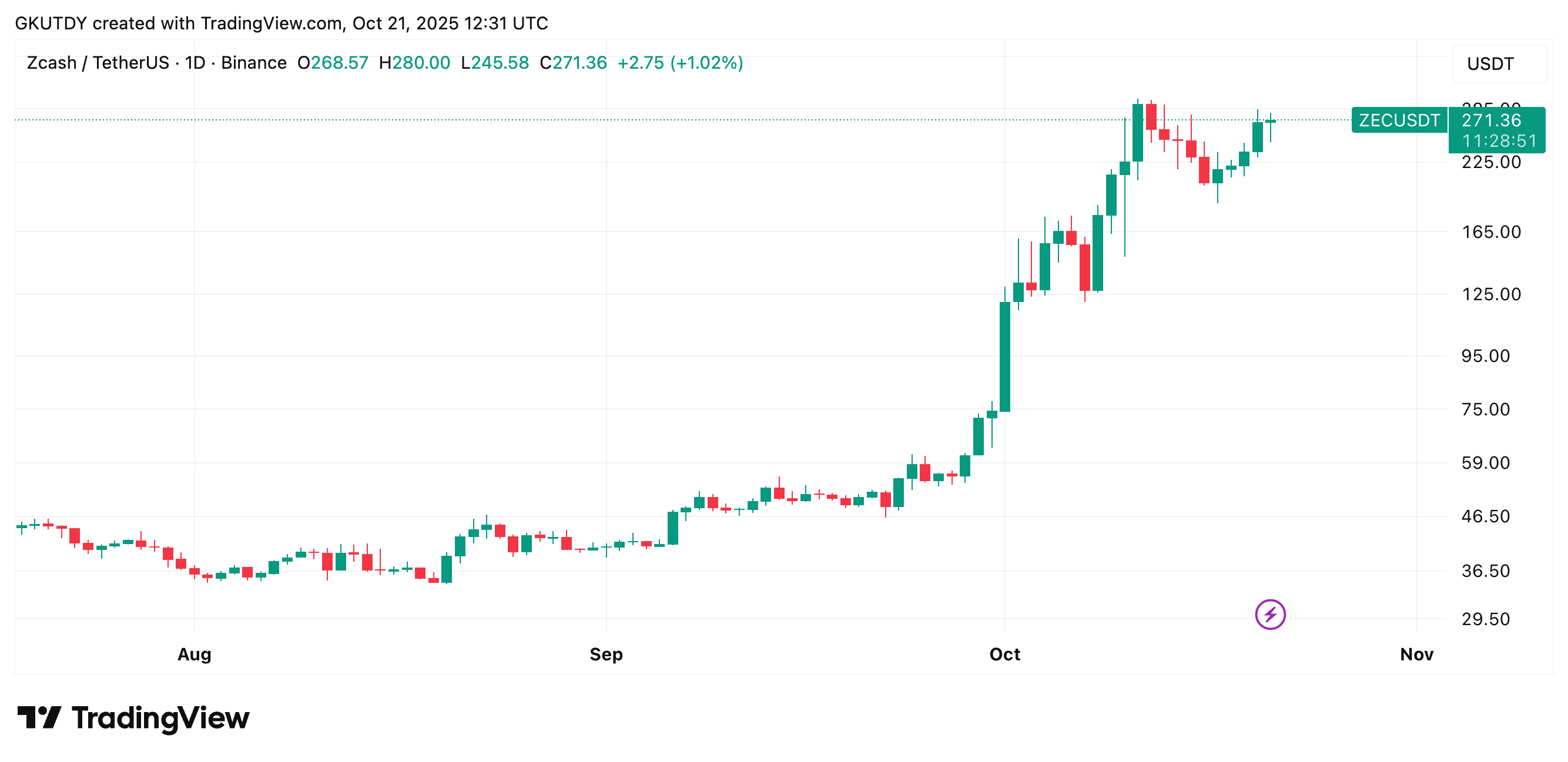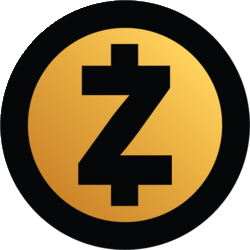Zcash (ZEC) revives Satoshi Nakamoto’s vision for Bitcoin by implementing practical zero-knowledge proofs for enhanced privacy, as highlighted by Solana contributor Mert from Helius. This protocol-level privacy feature positions ZEC as a potential upgrade to Bitcoin’s scarcity model, driving significant market interest.
-
Zcash integrates zk-SNARKs for shielded transactions, fulfilling Satoshi’s 2010 idea of privacy-enhanced Bitcoin.
-
Mert from Helius spotlighted ZEC’s relevance, sparking renewed discussions among crypto enthusiasts.
-
ZEC price surged over 750% since August, with data from Zechub showing increased adoption of shielded addresses, reducing liquid supply.
Discover how Zcash aligns with Satoshi Nakamoto’s zero-knowledge proofs vision, fueling a 750% price rally. Explore ZEC’s privacy edge in crypto today—stay ahead with expert insights.
What Did Satoshi Nakamoto Say About Zero-Knowledge Proofs and Bitcoin?
Satoshi Nakamoto, Bitcoin’s pseudonymous creator, discussed zero-knowledge proofs in a 2010 Bitcoin forum post, suggesting they could enable a more efficient and private version of the network. He noted that if made practical, such proofs would allow Bitcoin to be redesigned for better scalability and confidentiality without compromising security. This foresight underscores the foundational principles of privacy in cryptocurrency design.
How Does Zcash Implement Satoshi’s Privacy Vision?
Zcash builds directly on Bitcoin’s codebase but introduces zk-SNARKs, zero-knowledge succinct non-interactive arguments of knowledge, to enable fully shielded transactions. These proofs hide transaction details like sender, receiver, and amount while verifying validity, addressing Satoshi’s call for practical privacy enhancements. According to data from the Electric Coin Company, Zcash’s development team, this implementation has seen growing adoption, with shielded transaction volumes increasing steadily since launch. Experts like those from the Zcash Foundation emphasize that this protocol-level privacy sets ZEC apart, reducing risks of surveillance in blockchain analysis. In practice, users can opt for transparent or shielded addresses, offering flexibility without sacrificing usability. This structured approach ensures compliance with regulatory needs while preserving user anonymity, a balance Satoshi envisioned but couldn’t achieve at Bitcoin’s inception. Recent on-chain metrics from Zechub reveal a 20% uptick in shielded coins over the past quarter, signaling stronger network effects and potential for long-term value accrual.
Popular Solana contributor Mert from Helius was among the first major figures this cycle, alongside investor Naval Ravikant, to spotlight Zcash (ZEC) and bring it back into the crypto spotlight. His commentary on social media platforms drew attention to the privacy-focused cryptocurrency, often called a “dino coin” due to its age, pulling it from years of relative obscurity and reigniting speculation.
Mert took it a step further by connecting ZEC’s features to a key historical reference—Satoshi Nakamoto’s own writings. Back in 2010, on the original Bitcoin forum, Satoshi expressed interest in zero-knowledge proofs as a way to improve Bitcoin’s design. He candidly admitted the limitations of the existing framework and hoped for advancements that would make such proofs viable for enhancing privacy and efficiency.
For proponents like Mert, Zcash represents the realization of that idea. While Bitcoin excels in scarcity and decentralization, ZEC layers in native privacy through its protocol, creating a cryptocurrency that echoes Satoshi’s unfulfilled aspirations for a more private monetary system.
ZEC price rockets 750% in just two months
The cryptocurrency market has responded enthusiastically to Zcash’s renewed privacy narrative. On-chain price data indicates ZEC has climbed more than 750% since August, surpassing the $270 mark after prolonged periods of underperformance and dismissal by many investors.

ZEC/USD by TradingView
Beyond the surface-level gains, deeper metrics show substantive growth. More ZEC holders are transferring coins to shielded addresses, leveraging zk-SNARKs to obscure transaction details natively on the blockchain. Analytics from Zechub highlight this shift, with shielded pool participation rising, which correlates to reduced circulating supply and diminished selling pressure from short-term speculators.
Combining these elements, the current ZEC rally appears grounded in fundamentals rather than fleeting hype. By invoking Satoshi’s words, Mert and others are framing Zcash not as a forgotten altcoin, but as the privacy-evolved iteration of Bitcoin that its founder once dreamed of—delivered years later through innovative cryptography.
Zcash’s resurgence also ties into broader trends in the crypto space, where privacy coins face regulatory scrutiny but continue to attract users seeking financial sovereignty. The Zcash Foundation reports that development efforts are ongoing, with upgrades aimed at improving transaction speeds and interoperability with other networks. This positions ZEC well amid increasing demand for confidential transactions in decentralized finance (DeFi) and beyond.
Market analysts, drawing from reports by firms like Glassnode, note that ZEC’s hash rate has stabilized at healthy levels, indicating miner confidence despite past volatility. This technical resilience supports the narrative of ZEC as a mature privacy solution, aligning with Satoshi’s emphasis on robust, future-proof designs.
Frequently Asked Questions
Why Is Zcash Price Surging in Relation to Satoshi Nakamoto’s Vision?
Zcash’s price has surged over 750% since August due to renewed interest in its privacy features, which directly echo Satoshi Nakamoto’s 2010 comments on zero-knowledge proofs. Mert from Helius amplified this connection, driving speculation and adoption. On-chain data shows increased shielded transactions, tightening supply and boosting value in a market favoring privacy narratives.
What Makes Zcash a Privacy Upgrade for Bitcoin Users?
Zcash enhances Bitcoin’s model by adding optional shielded transactions via zk-SNARKs, allowing users to keep financial details private without altering the core blockchain. This setup provides the confidentiality Satoshi desired, making it ideal for everyday use where privacy matters. It’s fully compatible with Bitcoin’s principles but adds a layer of protection against transaction tracing.
Key Takeaways
- Zcash Fulfills Satoshi’s Privacy Dream: Through zk-SNARKs, ZEC implements the zero-knowledge proofs Satoshi envisioned, offering protocol-level privacy absent in Bitcoin.
- Market Momentum Builds: A 750% price increase since August reflects growing adoption, with Zechub data showing more coins in shielded pools, reducing sell pressure.
- Future-Proof Innovation: Ongoing developments by the Zcash Foundation ensure scalability, encouraging users to explore ZEC for secure, private transactions today.
Conclusion
Zcash (ZEC) stands out in the crypto landscape by embodying Satoshi Nakamoto‘s forward-thinking ideas on zero-knowledge proofs and privacy, as recently underscored by Mert from Helius. With its zk-SNARKs enabling shielded transactions and a remarkable 750% price rally signaling market validation, ZEC demonstrates enduring relevance. As privacy demands grow in 2025, Zcash positions itself as a cornerstone for secure digital assets—consider integrating its features into your portfolio for enhanced financial autonomy.
